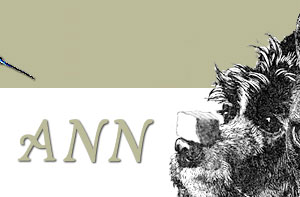|
A head halter is a special kind of collar with a strap that goes around your dog's nose and another strap that goes around his neck, just behind his ears. The leash fastens to the halter under his chin to a ring that's also attached to the nose strap. When your dog begins to pull, the design of the head halter causes the dog's nose to be turned back toward you, which makes it physically difficult for him to continue pulling. The head halter is completely humane, as it doesn't cause any pain, and works much better to prevent a dog from pulling than a choke chain or prong collar. Brand names for head halters include "Gentle Leader," "Promise Collar" and "Halti."
How should it fit?
The head halter must be properly fitted to be effective and comfortable for your dog. The neck strap should be as high up on your dog's neck as you can get it, just behind his ears. The strap should be just tight enough for you to fit one finger between it and your dog's neck. The nosepiece should be adjusted so that when your dog's mouth is closed, it can slide down as far as the beginning of the skin on his nose, but not so loose that it can slide off the end of his nose. The nosepiece will sit naturally, just below your dog's eyes. Make sure that the metal ring to which the leash attaches is underneath his chin.
How will your dog react?
Most dogs will resist a head halter, at first. The amount of resistance varies for each dog. When you first put the head halter on, your dog may try to get it off by pawing at his nose or rubbing his nose on the ground, on you or on anything your dog can get close to. The best strategy is to keep his head up and keep him moving by using positive verbal reinforcement and treats. Most dogs eventually accept head halters. When your dog associates the halter with going for a walk, he'll begin to react positively to it, and soon, both you and your dog will enjoy taking walks together!
Things to remember:
- Make sure the head halter is fitted properly.
- It should be snug around your dog's neck and high behind his ears, but loose enough around his nose so that the nose strap can slide easily down to the fleshy part of his nose.
- A head halter is not a muzzle.
- A dog wearing a head halter can still eat, drink, pant, bark and bite, if he chooses.
- Never use a hard jerk with the head halter.
- Don't use the head halter with a retractable lead.
- If your dog runs quickly to the end of the lead, it may give itself a hard jerk.
- Your dog should wear his head halter only during on-leash walks with you and/or when you're directly supervising him.
- If your dog wears the head halter around the house, he'll have plenty of time to work at getting it off, and will eventually succeed.
- Read the information sheet that comes with your head halter.
Copyright 2000. Dumb Friends League. All rights reserved. |


